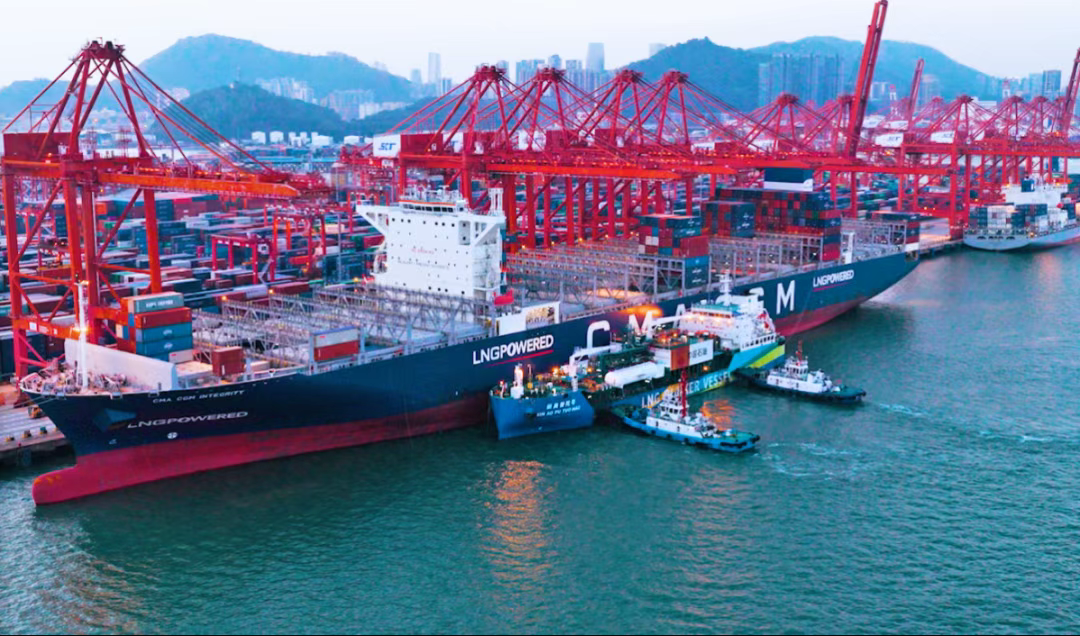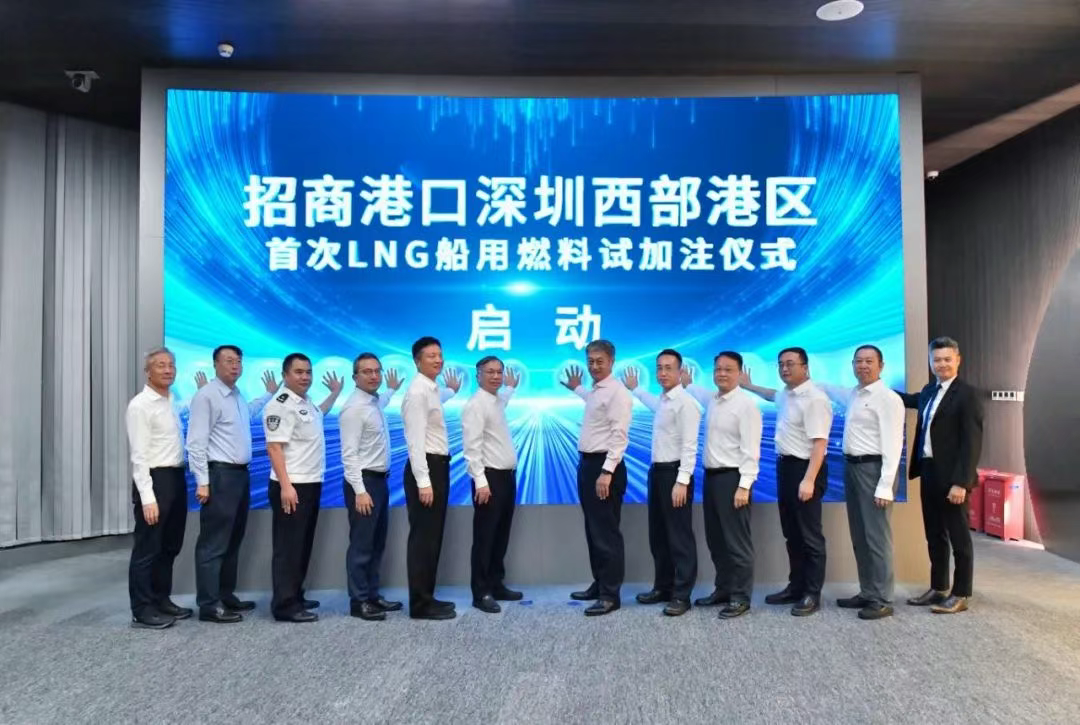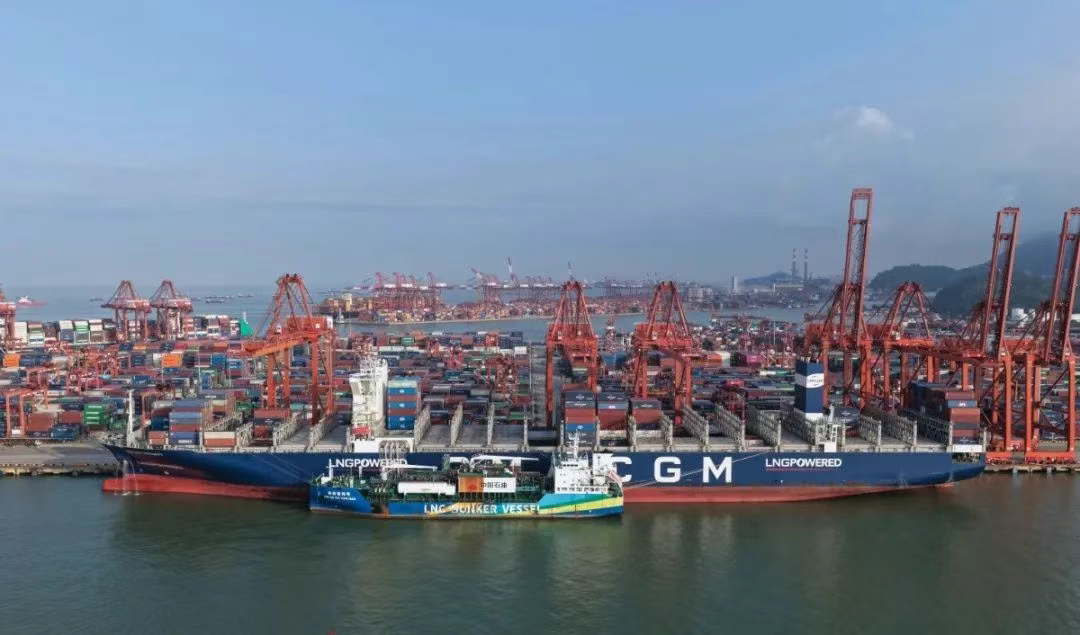In the early morning of August 9th, with the full safety guarantee from maritime authorities, relevant government departments in Shenzhen, China Merchants Port and other related enterprises worked closely together to conduct a trial LNG fuel bunkering for the “CMA CGM Integrity” at the Shenzhen Western Port Area of China Merchants Port, successfully completing a 6,700-cubic-meter LNG fuel bunkering operation.

This bunkering marks the first simultaneous operation of LNG container ship loading/unloading and LNG bunkering at the Shenzhen Western Port Area, signifying a new breakthrough in the construction of a green port in the area and holding great significance for Shenzhen Port to build an international LNG bunkering center.
Against the backdrop of green and low-carbon development, the port and shipping industries are rapidly transitioning to clean energy. LNG and other clean energy vessels are increasing in number, and ocean-going mainline vessels are accelerating their transition to LNG-powered vessels. Therefore, LNG bunkering services at terminals have become a vital component of port support services.
Green energy is not only a new development path for port and shipping development, but also a key factor in enhancing the port hub’s capabilities and core competitiveness. If LNG vessels calling at the Shenzhen West Port Area are unable to bunkering during their in-port operations and are forced to bunker at anchorages or other ports, this will significantly reduce shipping efficiency for liner companies and impact the overall competitiveness of Shenzhen Port.
China Merchants Port, in collaboration with relevant government departments, CNPC, shipping companies, etc., continues to promote the LNG ship bunkering business in the Shenzhen West Port Area and has received strong support from all parties.

To ensure the safe operation of LNG bunkering services, China Merchants Port commissioned a professional organization to conduct special research and review on LNG bunkering operations and navigation safety, and made full preparations for emergency response plans and risk prevention. The successful LNG bunkering operation for international vessels in the Shenzhen West Port Area has improved the service functions of the Shenzhen West Port Area and is of great significance in leading the green and low-carbon development of ports and shipping.
This breakthrough in LNG marine fuel bunkering marks that China Merchants Port is capable of providing LNG energy supply services. China Merchants Port is promoting the development of green ports through practical actions and has formed a “China Merchants Plan” with great reference and demonstration significance.

In 2021, China Merchants Port’s Shenzhen West Port Area completed the construction of Mawan SmartPort (MCT), the first “5G Green, Low-Carbon Smart Port” in the Guangdong-Hong Kong-Macao Greater Bay Area. The port passed the China Port Association’s on-site review for a “Five-Star China Smart Port” in 2024. While promoting green and smart port development, the port business has maintained sustained growth, significantly enhancing the competitiveness of Shenzhen Port. In 2024, China Merchants Port’s Shenzhen West Port Area achieved a record high container throughput of 15.99 million TEUs, including 15.45 million TEUs for foreign trade containers. The foreign trade market share exceeded 50% again after many years.
As of the end of July this year, China Merchants Port’s Shenzhen Western Port Area has 191 regularly calling routes with a dense layout covering major global trade regions, including North America, South America, the Mediterranean, Southeast Asia, and Africa. These routes provide diversified, efficient, and safe logistics channels for customers in the South China region.
China Merchants Port’s Shenzhen Western Port Area has cumulatively launched 33 “Guangdong-Hong Kong-Macau Greater Bay Area Combined Ports” locations, achieving full coverage of major inland river terminals in the Greater Bay Area. The dense route network has significantly smoothed foreign trade logistics links and promoted regional economic and trade development.


